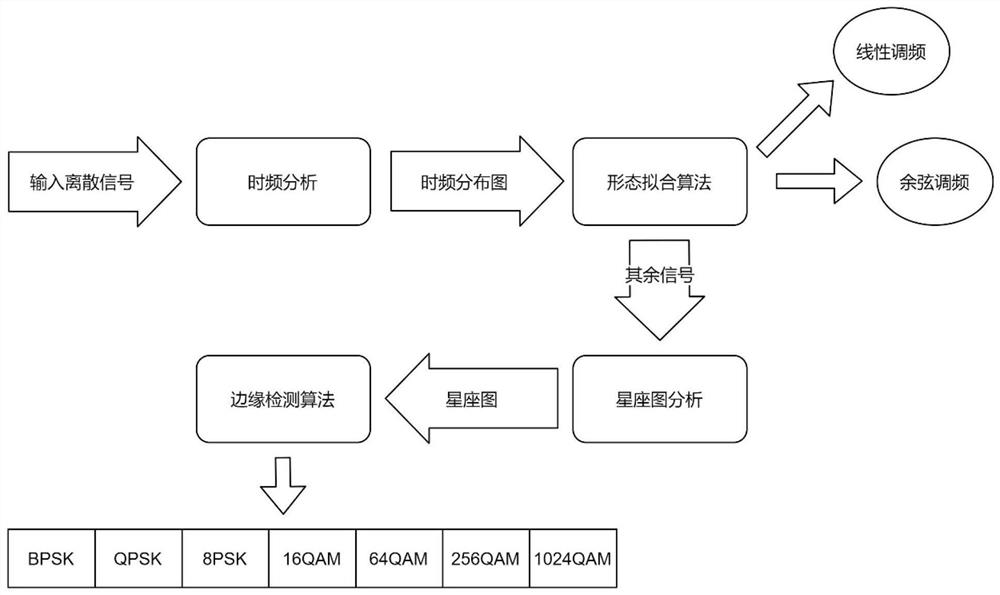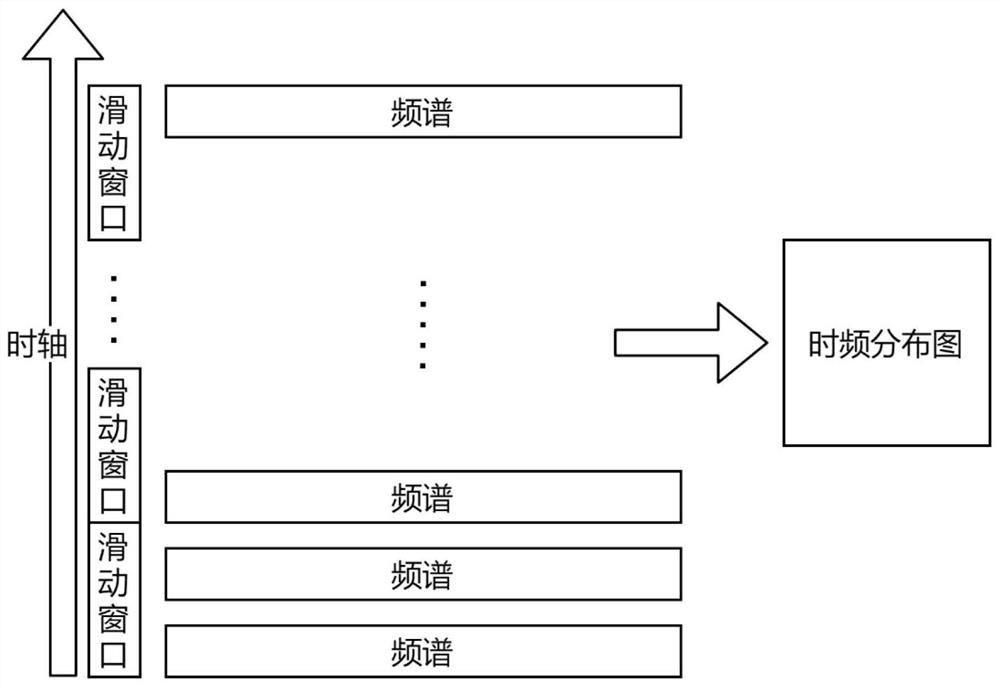Aliasing signal modulation type identification method based on time-frequency analysis and constellation diagram analysis
An aliasing signal, time-frequency analysis technology, applied in signal pattern recognition, character and pattern recognition, image analysis and other directions, can solve the problems of limited recognition accuracy, slow speed, and difficulty in adapting to complex and changeable electromagnetic environments. , to achieve the effect of strong practical value and small computing power requirements
- Summary
- Abstract
- Description
- Claims
- Application Information
AI Technical Summary
Problems solved by technology
Method used
Image
Examples
Embodiment 1
[0120] Embodiment 1: see Figure 1-Figure 9 , a method for identifying modulation types of aliased signals based on time-frequency analysis and constellation diagram analysis, said method comprising the following steps:
[0121] Step 1: Identify the type of analog modulation in the aliased signal using time-frequency analysis combined with shape fitting;
[0122] Step 2: Identify the type of digital modulation in the aliased signal using constellation analysis combined with edge detection.
[0123] like figure 1 As shown, using the time-frequency analysis method (including short-time Fourier transform, Morlet wavelet transform, etc.), draw the time-frequency distribution diagram, and use the shape fitting algorithm to identify the analog modulation signal in the time-frequency distribution diagram. For the digital modulation type in the aliased signal, use the constellation diagram analysis method to draw the signal constellation diagram, and use the edge detection algorithm...
Embodiment approach
[0217] The input signal is composed of one of digital modulation methods such as linear frequency modulation LFM, sinusoidal frequency modulation SFM and BPSK, QPSK, 8PSK, 16QAM, etc. In the case of a signal-to-noise ratio of 25dB, the short-time Fourier transform (DFT) is used to draw the time-frequency distribution diagram of the input signal, as shown in Image 6 Shown:
[0218] It is easy to see that the signal is divided into three parts in the time-frequency domain, and the three parts can be distinguished by the shape fitting method, the two analog modulation types are separated, and the analog modulation type and the digital modulation type are separated .
[0219] Firstly, smooth and denoise the signal, take 5 pixels in the vertical direction as a unit, cut the time-frequency image into several horizontal bars, and superimpose the five vertical pixel values into a one-dimensional gray value vector. The processed image is as Figure 7 shown.
[0220] Using a tria...
PUM
 Login to View More
Login to View More Abstract
Description
Claims
Application Information
 Login to View More
Login to View More - R&D
- Intellectual Property
- Life Sciences
- Materials
- Tech Scout
- Unparalleled Data Quality
- Higher Quality Content
- 60% Fewer Hallucinations
Browse by: Latest US Patents, China's latest patents, Technical Efficacy Thesaurus, Application Domain, Technology Topic, Popular Technical Reports.
© 2025 PatSnap. All rights reserved.Legal|Privacy policy|Modern Slavery Act Transparency Statement|Sitemap|About US| Contact US: help@patsnap.com



